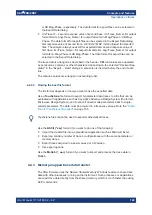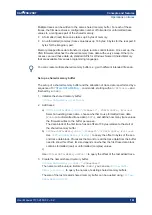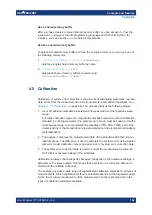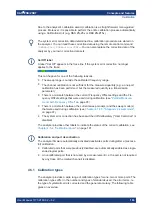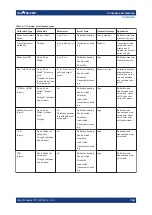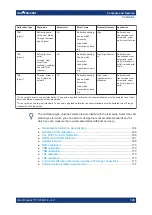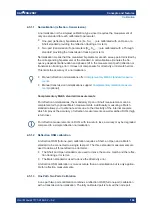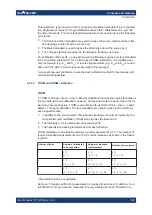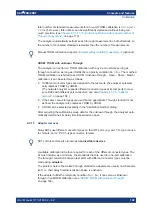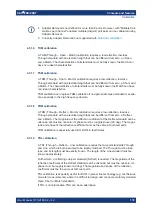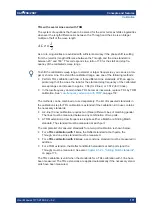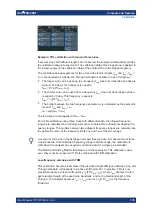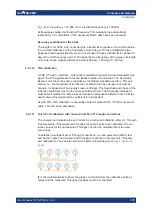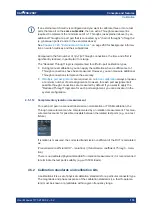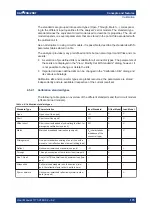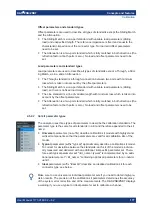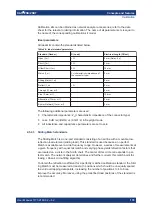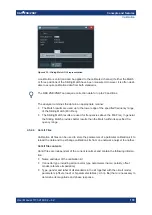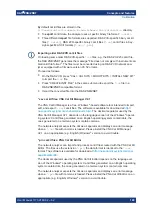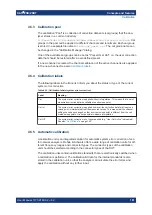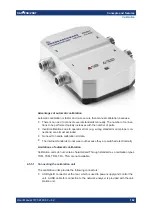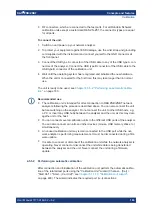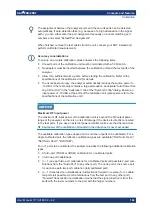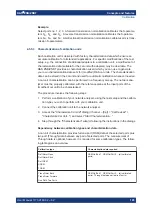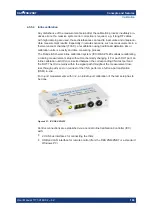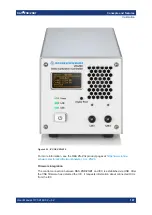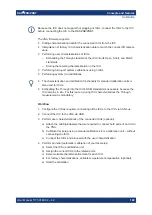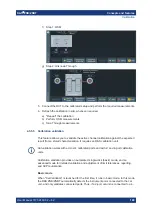
Concepts and features
R&S
®
ZNB/ZNBT
174
User Manual 1173.9163.02 ─ 62
If an external switch matrix is configured and you want to calibrate three or more test
ports that are all on the
same submatrix
, then an extra Through measurement is
required: Complement the minimum set of n-1 Throughs (as explained above) by an
additional Through at a port pair that is connected by a "chain of throughs" of length 2
(e.g. between ports 2 and 4 in the examples above).
See
Chapter 4.7.29, "External switch matrices"
on page 269 for background informa-
tion on switch matrices and their submatrices.
Compared to the full number of n(n-1)/2 Through connections, the time and effort is
significantly reduced, in particular if n is large.
The "Reduced Through" logic is implemented for all full n-port calibration types.
●
During manual calibration, you can apply the calibration when a sufficient set of
Through connections have been measured. However, you can measure additional
Through connections to improve the accuracy.
●
a minimum number of port assignments. However, for each port assignment all
possible through connections are measured by default. If you want to apply the
"Reduced Through" logic also for each port assignment, you can activate it in the
system configuration.
4.5.1.12
Complementary isolation measurement
For each port pair in a manual transmission normalization or TOSM calibration, the
Through measurement can be complemented by an isolation measurement. This mea-
surement accounts for possible crosstalk between the related test ports (e.g. on a test
fixture).
If isolation is measured, the corrected transmission coefficient of the DUT is calculated
as:
(Transmission coefficient DUT – Isolation) / (Transmission coefficient Through – Isola-
tion)
There is no dedicated physical standard for isolation measurement; it is recommended
to terminate the test ports suitably (e.g. with 50 Ω loads).
4.5.2
Calibration standards and calibration kits
A calibration kit is a set of physical calibration standards for a particular connector type.
The magnitude and phase response of the calibration standards (i.e. their S-parame-
ters) must be known or predictable within a given frequency range.
Calibration

